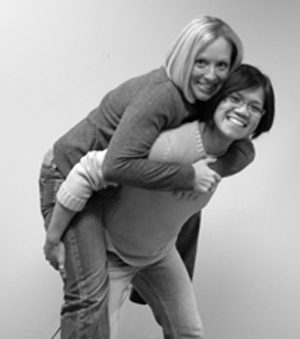Why the 2010 census affects our community.
In 2008, Maryland residents Morgan and Rae Meneses-Sheets married in front of 140 of their friends and family, and they made it “official” in September 2009 when they traveled to Vermont to obtain a marriage license. As of February 24, Maryland recognizes same-sex marriages from out-of-state, but the federal government (through the Defense of Marriage Act) still does not legally recognize their union.
However, that same federal government is now giving them a choice as to how to fill out the 2010 census forms.
For the first time in the 230-year history of the United States Census, same-sex couples can mark “husband and wife” or “unmarried partners” regardless of their legal marital status. Unlike the past, the raw data will not be re-coded by changing either the sex of one partner, even if they choose husband and wife, or changing the status from married to unmarried, according to Tim Olson, Assistant Division Chief, Field Division, U.S. Census Bureau.
The Meneses-Sheets both agree that they will check the “husband and wife” category. Morgan, who is Executive Director of Equality Maryland, the state’s LGBT civil rights organization, says, “Even though we do not have the equal legal protections, we consider ourselves—and our families and friends see us—as married.”
The census is not a sampling of the population, but an actual count of citizens and non-citizens. Since the 1790 Census Act, citizens are required by law to participate, and the Bureau is prohibited from sharing any individual’s specific information with other government agencies and private entities.
Census data is necessary and invaluable as it is used to apportion congressional seats and help allocate approximately $400 billion in federal funds each year.
Olson stresses how important having an accurate count of same sex couples, both married and unmarried partners, will be to the LGBT community. At all geographic levels, LGBT organizations can rely on the information for funding, advocacy, service needs and representation.
Community groups that provide services such as housing, health care or legal representation to the LGBT community can use this data to validate grant applications, according to Olson. In 2012, the census will publish a special report on same-sex couples for the first time, based on the 2010 data.
With all of the confusion surrounding the current status of marriage equality for same-sex couples, both Morgan and Rae doubt that many in the LGBT community will understand how to fill out what the Census Bureau considers the simplest form to date. Morgan believes, “Without marriage equality, many of us are put in a position of swallowing our pride and marking ‘single’ on all kinds of forms.
Because of these contradictions, many LGBT people will not even know that they have the option to mark what most closely matches them. We are just so used to not having that choice.”
Rae, a speech pathologist, does admit that the country is moving in the right direction, and there is hope reflected in the census change. “I think it could be accurate…there is still a long way to go in terms of the LGBT community. As it takes our country time to acknowledge differences. Perhaps in the 2020 Census we’ll see a more accurate picture,” she states.
Toni Broaddus, Executive Director of Equality Federation, the national alliance of state LGBT equality groups, is more optimistic. “The census can help make LGBT people visible to the public and to our government … because we will still have the most authoritative demographic snapshot of the LGBT community we have ever had.
We will see same-sex couples of all races and all ages living in every part of our country. We will know how many are raising children. Same-sex couples should report whether they are married or unmarried partners.
Transgender people should check off the sex they most closely identify with, because the only options in 2010 will be male or female. Multi-racial families should consider who they want to list as “Person 1,” because some census statistics will categorize families by the race of the first person on the form. The most important thing is that every LGBT American should stand up and be counted by completing and returning the form.”
